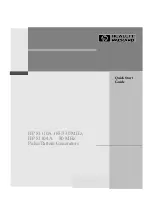
TYPICAL NEGATIVE RESULTS, WITH NO DUT INSTALLED
The photos below show typical “HV PULSE” waveforms with with AMP1 = -1.5 kV, and
a daughterboard installed in the ZIF socket in the negative position (silkscreen arrows
pointing same direction, daughterboard is as far as possible from the ZIF lever), but
with no DUT installed in the DIP8 socket on the daughterboard:
C = 0 pF, t
R10-90
= 7.537 ns
C = 75 pF, t
R10-90
= 18.23 ns
C = 150 pF, t
R10-90
= 35.02 ns
C = 300 pF, t
R10-90
= 58.58 ns
C = 600 pF, t
R10-90
= 106.7 ns
Negative positioning
of daughterboard
46
Summary of Contents for AVRQ-5-B
Page 52: ...Bottom side 52 ...
Page 57: ...PCB 299B FOR ADUM241E0BRWZ 57 ...
Page 82: ...PCB 158R2 LOW VOLTAGE POWER SUPPLY ...
Page 87: ...DUT WIRING ON STANDARD DAUGHTERBOARD PCB 267C ...
Page 88: ...DUT WIRING ON CUSTOMIZED TLP2366 DAUGHTERBOARD PCB 298B ...
Page 89: ...DUT WIRING ON CUSTOMIZED ADUM241E0BRWZ DAUGHTERBOARD PCB 299B ...
Page 91: ...PERFORMANCE CHECK SHEET 91 ...
















































